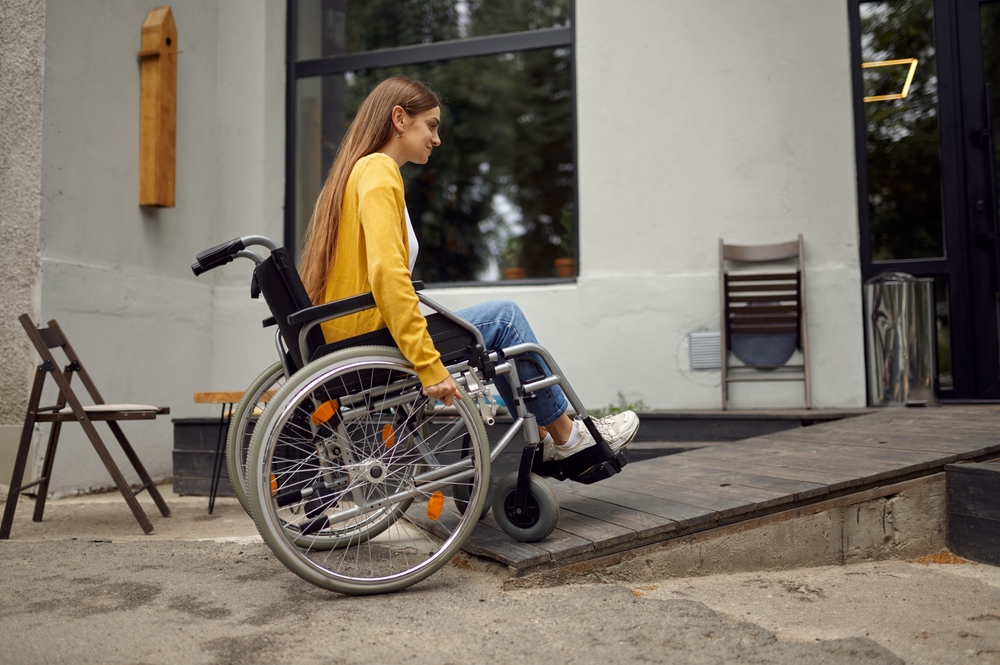Adapting a home for someone with limited mobility or a physical disability requires thoughtful planning to ensure accessibility, safety, and comfort. By addressing key areas such as entrances, living spaces, kitchens, and bathrooms, you can create a functional environment tailored to individual needs. These modifications can significantly improve daily life, fostering independence and ease of movement.
Improving Entrance and Access
Ensuring easy entry is the first step in creating an accessible home. Traditional stairs can be a significant barrier, so installing ramps with a gentle slope provides a safer alternative for wheelchair or walker users.
- Wider Doorways: Doorways should be at least 32-36 inches wide to allow wheelchairs, scooters, and other mobility aids to pass through comfortably.
- Door Handles: Replace round doorknobs with lever-style handles to make doors easier to open for those with limited grip strength.
- Automatic Doors: Consider electric openers controlled by a button or remote for effortless accessibility.
Additional improvements include non-slip pathways, handrails, grab bars, and intercom systems for remote communication. These changes ensure safety and convenience at entry points.
Creating Accessible Hallways and Living Spaces
Hallways and living spaces must be wide and obstacle-free to accommodate mobility aids.

- Sliding Doors: Replace hinged doors with sliding ones to save space and reduce effort.
- Furniture Arrangement: Use ergonomic furniture like Disability chairs with armrests and higher seats for better support. Arrange furniture to create clear pathways for easy navigation.
- Smart Home Technology: Add smart controls for lights, curtains, and appliances to enhance independence.
Lowering shelves and using adjustable tables make the living space more functional, ensuring comfort and ease of use.
Designing an Accessible Kitchen
The kitchen should be both safe and functional.
- Countertops and Cabinets: Lowered countertops and cabinets ensure seated users can access essential items with ease.
- Accessible Appliances: Use side-opening ovens, front-controlled induction hobs, and wall-mounted microwaves.
- Storage Solutions: Incorporate pull-out shelves or Lazy Susans to avoid excessive bending or stretching.
Non-slip flooring and lever faucets simplify tasks while ensuring safety. Keeping frequently used items within reach transforms the kitchen into an inclusive space.
Adapting Bathrooms for Safety and Accessibility
Bathrooms can pose significant challenges, but strategic modifications can enhance safety and usability.
- Roll-In Showers: Install rimless showers with enough space for a wheelchair or shower chair.
- Grab Bars: Place grab bars near showers, bathtubs, and toilets to prevent falls.
- Toilet and Sink Adjustments: Use raised or adjustable-height toilet seats and wall-mounted sinks with roll-under space.
Anti-slip flooring and emergency call buttons add an extra layer of security. Waterproof features further ensure safety in this critical area.
Improving Bedroom Comfort and Multi-Level Access
Bedrooms should focus on comfort and accessibility.
- Adjustable Beds: Electric or hospital-style beds allow users to change positions easily.
- Accessible Storage: Use lower wardrobes with pull-down mechanisms for convenient clothing access.
- Smart Controls: Install smart lighting, blinds, and alarms for effortless control from the bed.
For multi-level homes, stairlifts or elevators are essential, along with sturdy handrails and anti-slip treads on stairs.
Final Thoughts
Adapting a home for someone with limited mobility involves more than just physical adjustments—it’s about creating an environment that promotes independence, safety, and comfort. Collaborating with accessibility experts ensures tailored solutions for individual needs. With thoughtful modifications, any home can become a welcoming and inclusive space.
Sign up for our Daily newsletter
We'll be in your inbox every morning Monday-Saturday with all the day’s top business news, inspiring stories, best advice and reporting from Entrepreneur,

